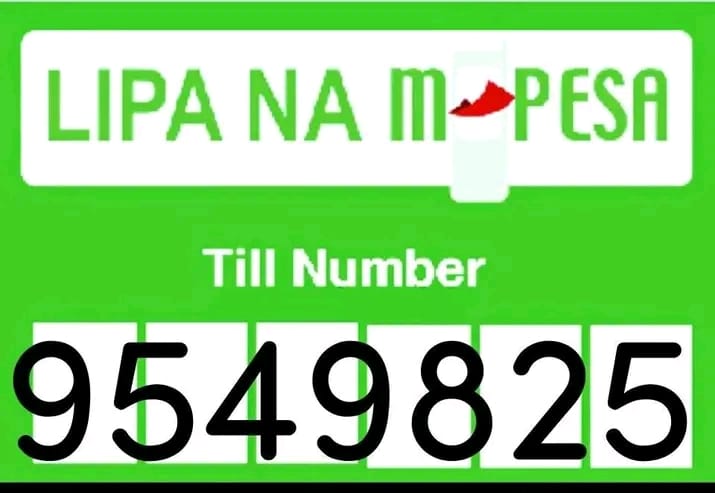
simply amazing, always for you.
An In-Depth Narrative of Ethnic Tension, Political Betrayal, and National Trauma

A Nation at a Crossroads
December 2007 should have marked another milestone in Kenya’s democratic journey. The country had made notable strides since the single-party dictatorship era of the 1980s and early 1990s. However, the general elections that year would trigger one of the most horrifying and traumatic periods in Kenya’s post-independence history.
Between December 2007 and February 2008, Kenya descended into chaos. Over 1,100 people were killed, more than 650,000 displaced, and thousands more were injured, raped, or lost their livelihoods. But what exactly happened? What made ordinary neighbors turn on each other with machetes, arrows, and fire? Why did the violence unfold so quickly and brutally? And who were the real winners and losers?
This article explores what really happened during the 2007–2008 post-election violence in Kenya: the political dynamics, the historical wounds, the orchestrated brutality, and the enduring scars left on the nation’s psyche.
1. Background: The Road to December 2007
To understand the post-election violence, we must first grasp Kenya’s deep-rooted ethnic and political history.
a) Ethnic Foundations of Political Power
Since independence in 1963, Kenyan politics has been heavily influenced by ethnic affiliations. The “Big Five” ethnic groups — Kikuyu, Luo, Luhya, Kalenjin, and Kamba — have dominated both political representation and resource allocation.
- Jomo Kenyatta (1963–1978), Kenya’s founding president, was a Kikuyu. Under his leadership, land and power flowed disproportionately to his ethnic community.
- Daniel arap Moi (1978–2002), a Kalenjin, succeeded Kenyatta and ruled for 24 years with an authoritarian grip, often using patronage and repression to retain power.
b) The Kibaki Presidency and the NARC Betrayal
In 2002, a wave of optimism swept through Kenya with the defeat of KANU, the party that had ruled since independence. Mwai Kibaki, a Kikuyu, was elected president under the National Rainbow Coalition (NARC), a powerful multi-ethnic alliance including prominent leaders like Raila Odinga, a Luo.
Raila and his allies expected a power-sharing arrangement. But once in office, Kibaki sidelined many of his coalition partners, leading to a sense of betrayal — especially among the Luo and other ethnic groups that had backed his presidency.
By the time of the 2005 constitutional referendum, alliances had fractured. Raila’s faction (now dubbed the “Orange Democratic Movement” or ODM) triumphed over Kibaki’s “Banana” faction, setting the stage for a tense political showdown in 2007.

2. The 2007 Elections: Fraud, Fury, and Flashpoint
a) A Heated Campaign Season
The 2007 general elections were highly competitive. Raila Odinga (ODM) and Mwai Kibaki (Party of National Unity – PNU) were the main presidential contenders.
The ODM’s message resonated with communities that felt marginalized by the Kibaki administration. Raila promised decentralization, equitable development, and an end to ethnic favoritism.
b) The Disputed Results
On 27th December 2007, Kenyans voted in large numbers. Early tallies showed Raila Odinga leading significantly. But the vote count process became suspiciously slow and opaque.
By 30th December, the Electoral Commission of Kenya (ECK) announced Kibaki as the winner, despite protests and accusations of vote rigging.
- ECK chairman Samuel Kivuitu later admitted he was pressured to announce the results, even though he had doubts about their accuracy.
- International observers, including the EU and the Carter Center, reported massive irregularities and lack of transparency.
Kibaki was hastily sworn in at State House in a closed-door ceremony, triggering massive outrage.
3. The Violence Unleashed: Spontaneous or Orchestrated?
The aftermath of the disputed election unleashed a tsunami of violence, which played out in three overlapping waves:
a) Spontaneous Protests and Police Brutality
- Immediately after the results were announced, protests erupted in ODM strongholds like Kisumu, Kibera, and Eldoret.
- The police responded with lethal force, shooting unarmed demonstrators, including children.
- In Kisumu alone, dozens were killed in what Human Rights Watch later described as extrajudicial executions.
b) Ethnic Cleansing in the Rift Valley
The second and more brutal wave took the form of organized ethnic violence.
- In the Rift Valley, especially Eldoret and Naivasha, Kikuyus were targeted by Kalenjin and Luo militias who viewed them as symbols of Kibaki’s illegitimate presidency.
- Homes were torched, and entire villages wiped out. One of the most horrifying incidents occurred on 1st January 2008, when over 30 Kikuyus were burned alive in a church in Kiambaa, Eldoret.
c) Revenge Attacks
By mid-January, Mungiki gangs (a banned Kikuyu sectarian group) began retaliation attacks against Luos, Kalenjins, and Luhyas in Central Province and Nairobi outskirts. The cycle of revenge intensified the bloodshed.
4. Role of Political Elites and Power Brokers
The post-election violence was not just the result of ethnic animosity — it was enabled and orchestrated by political elites and local power brokers.
- Evidence later presented at the International Criminal Court (ICC) showed that both ODM and PNU affiliates mobilized and funded youth militias.
- Eldoret MP William Ruto (ODM) and Deputy Prime Minister Uhuru Kenyatta (PNU) were among the six top suspects initially indicted by the ICC for crimes against humanity (charges were later dropped due to witness intimidation and lack of evidence).
5. The International Response and the Kofi Annan Mediation
As the violence escalated, Kenya teetered on the brink of civil war. The world watched with horror as a once-stable democracy unraveled.
a) Diplomatic Pressure
- The United States, United Kingdom, and European Union condemned the violence and pressured both sides to negotiate.
- Foreign aid and investments were put on hold, increasing economic pressure.
b) Kofi Annan Steps In
Former UN Secretary-General Kofi Annan led a team of eminent African leaders to broker peace through the African Union-backed Panel of Eminent African Personalities.
After intense negotiations, the two main rivals — Raila Odinga and Mwai Kibaki — signed a power-sharing deal on 28th February 2008.
6. The National Accord: Power Sharing and Fragile Peace
The agreement created a Grand Coalition Government, with Kibaki as president and Raila as Prime Minister — a new position.
Other components of the deal included:
- Formation of the Truth, Justice, and Reconciliation Commission (TJRC).
- Establishment of the Commission of Inquiry into Post-Election Violence (CIPEV), also known as the Waki Commission.
- Proposal for the creation of a Special Tribunal to try those responsible for the violence.
7. The Aftermath: Displacement, Trauma, and Injustice
a) Internally Displaced Persons (IDPs)
Hundreds of thousands of Kenyans were displaced, living in squalid IDP camps for months — some for years.
Many IDPs received meager compensation, while others were never resettled or compensated at all.
b) Sexual Violence and Women’s Pain
Thousands of women were raped during the violence — often deliberately and with brutal intent. Many survivors never saw justice.
- A 2018 Kenyan High Court case acknowledged the state’s failure to protect and support sexual violence victims.
c) Justice Delayed and Denied
- The Waki Report identified key suspects and handed over a sealed envelope to the ICC after Kenya failed to establish a special tribunal.
- In 2010–2011, the ICC indicted six Kenyans, including Uhuru Kenyatta and William Ruto. However, all cases eventually collapsed due to witness tampering, intimidation, and lack of state cooperation.
8. Long-Term Impact: A Wounded Nation
a) Ethnic Polarization Deepened
The violence worsened ethnic divisions. Many communities began to vote more tribally, fearing political exclusion.
b) Birth of a New Constitution
The 2007–08 crisis catalyzed constitutional reforms. In 2010, Kenya adopted a new constitution, which:
- Devolved power to counties.
- Established an independent judiciary.
- Created a more transparent electoral framework (IEBC).
c) Ruto and Uhuru: From Enemies to Allies
In an ironic twist, Ruto and Uhuru — former enemies and ICC suspects — formed the Jubilee Alliance and won the 2013 election, reshaping the country’s political landscape.
What Kenya Must Never Forget
The 2007–2008 post-election violence was not a spontaneous eruption of chaos. It was a carefully orchestrated tragedy born out of political betrayal, ethnic rivalry, and deep-rooted injustice.
While Kenya has made some progress since then, many wounds remain unhealed. Justice for victims has been elusive. Ethnic politics still dominates. The shadow of impunity continues to linger.
As Kenya moves toward future elections, the lessons from 2007 must remain front and centre: democracy without accountability is dangerous, and peace without justice is fragile.
SUGGESTED READS
- The Mau Mau Rebellion: Kenya’s First War for Freedom
- The Rise, Evolution, and Impact of the Sungusungu Vigilantes in Kisii, Kenya
- Mungiki: The Rise, Fall, and Shadows of Kenya’s Most Feared Underground Movement
- The Coffin Thief of Nairobi: The True Story of John Kibera
- The Blood Oath: Rise of the Bakassi Boys

Support Our Website!
We appreciate your visit and hope you find our content valuable. If you’d like to support us further, please consider contributing through the TILL NUMBER: 9549825. Your support helps us keep delivering great content!
If you’d like to support Nabado from outside Kenya, we invite you to send your contributions through trusted third-party services such as Remitly, SendWave, or WorldRemit. These platforms are reliable and convenient for international money transfers.
Please use the following details when sending your support:
Phone Number: +254701838999
Recipient Name: Peterson Getuma Okemwa
We sincerely appreciate your generosity and support. Thank you for being part of this journey!
